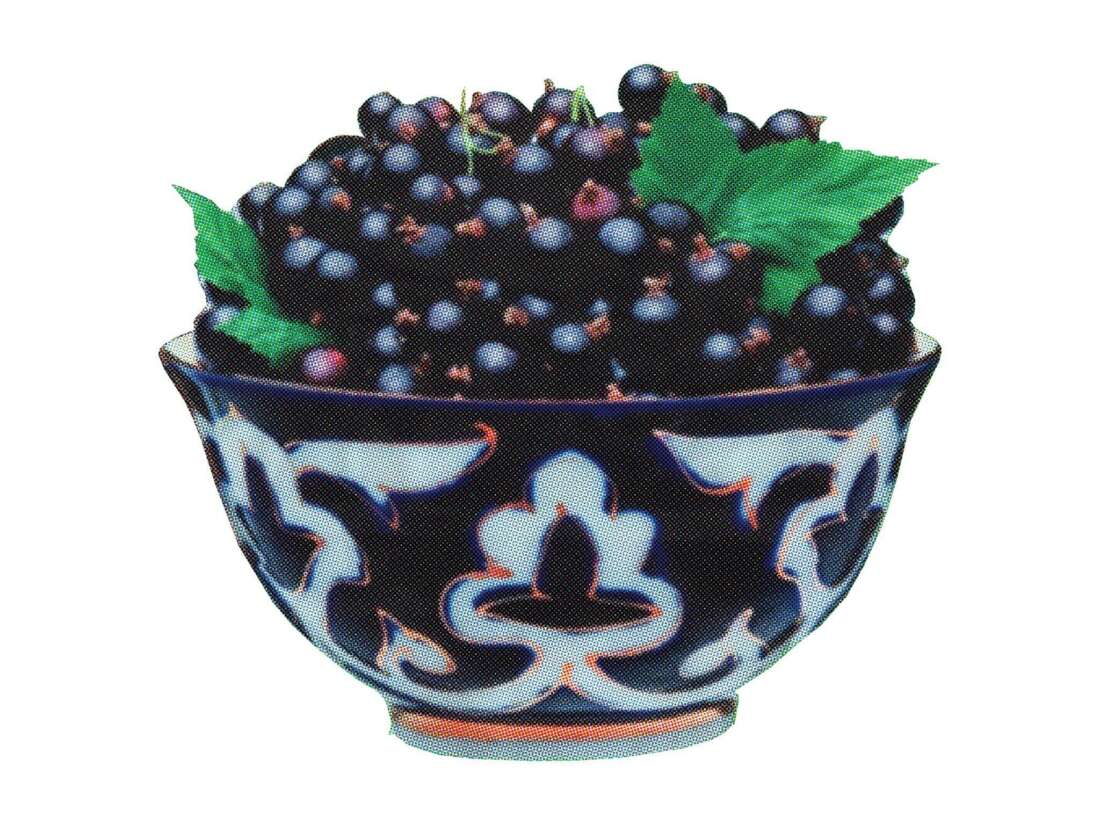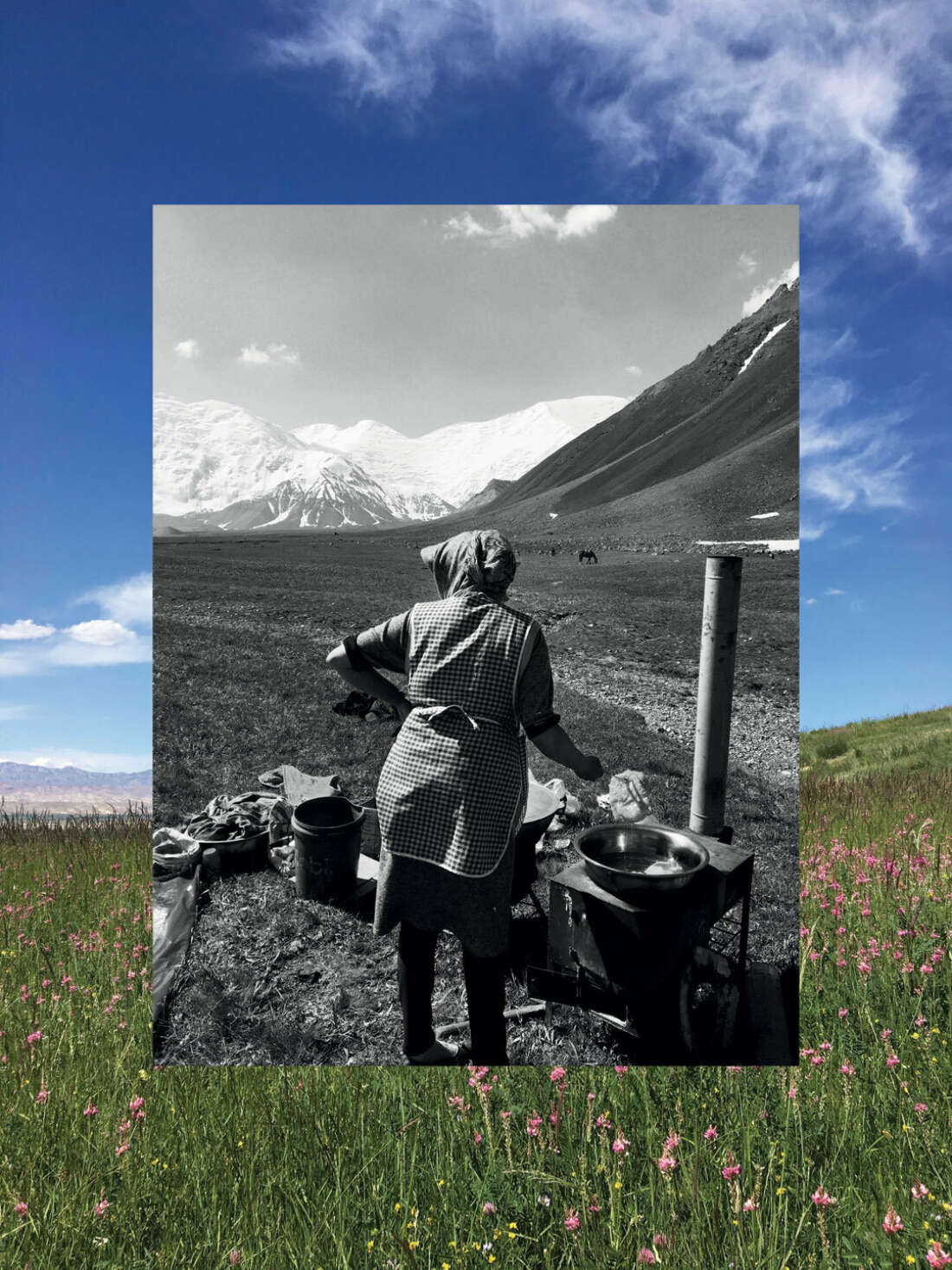Category — Features

Fill a basket
The woman helping a remote region in Kyrgyzstan rediscover its wild food heritage.
It’s early afternoon and the clouds are allowed to run free. They bounce and bob around the deep blue sky. The sun has only just started on its downward trajectory, but it already looks languid and strained, with so much distance still left to cover in a sky that seems to stretch out endlessly in every direction. Mountains ring this panorama. The plains here are over 2,000 metres above sea level; the foothills surpass 3,000 metres; and the highest peaks – which rise sharply but steadily up from the valley, visible in a gap between the hills – approach 6,000 metres and beyond. Yet, under the depth of this great sky, the mountains seem puny. More like servants of the sky than mighty cloud-piercers.
Such is the backdrop around Acha-Kaindy, a village in the At-Bashy region of Naryn oblast, Kyrgyzstan. It is a relatively remote alpine region, cut off from other areas by snow for much of the year. Its climate is extreme, harsh under both winter snow and penetrating summer sun. It’s also jaw-droppingly beautiful. And it’s the setting for our sweet and sour story.

This landscape around Acha-Kaindy is home to a precious ecosystem. There is a lot of local wildlife, and many species of wild plants. These include wild currants, sea buckthorn, wild roses, barberry, hawthorn, and other medicinal herbs, all of which local people traditionally used to prepare food and for the treatment of various diseases. Today, however, many of these local wild herbs and plants are on the verge of extinction.
Fortunately, some people are managing to do something against that. One of those people is Begayim Murzalieva, who is from Acha-Kaindy but, like so many others of her generation and her homeland, she got married and moved away in early adulthood, in search of better opportunities.
Begayim has very fond childhood memories of Acha-Kaindy. Among other things, she distinctly remembers the abundance of wild blueberry bushes. They were everywhere, she says, in her youth. In summer, she would pick a couple for a snack as she ran in the meadows with her friends; or she would head to the higher mountains with her mother, to fill a basket of sweet blueberries to take home and make batches of delicious jam.
Like other wild blueberries, the wild Kyrgyz blueberry is rich in bioactive compounds with strong antioxidant, antimicrobial, anticancer, and anti-inflammatory properties. It’s a particular type of blueberry, which grows only in mountainous regions of Kyrgyzstan. And it was once a highly revered product. Before this area was part of the Russian and then Soviet empires, the Kyrgyz people were seasonal pastoral nomads, who relied on wild plants for their sustenance and survival. The wild blueberry, in particular, was renowned for its outstanding medicinal and therapeutic uses, as well as its culinary value.
However, under Soviet rule, when centralised food distribution and planned industrial agriculture became the norm, people forgot about these traditions and local varieties. This disconnect has gotten worse in recent decades, as Acha-Kaindy, like the rest of Kyrgyzstan, has become increasingly modernised and globalised. Locally made products have been pushed off shelves in favour of cheaper, longer lasting, monotonous imported goods. Accordingly, the number of people who make local traditional products has decreased drastically.
To make matters worse for the wild blueberry, at the same time locals have increasingly ignored it, foreign companies have cottoned onto its fantastic nutritional and health-giving properties. They have moved in to harvest blueberries for their micronutrient and chemical properties, to be extracted for cosmetic items, pharmaceuticals, and nutritional supplements. For this reason, some local people pick berries just to sell them to these companies. Even worse, because picking wild berries by hand in the mountains is a fidgety, inconvenient, inefficient job, the approach of many people collecting berries for these companies has been to uproot and take the entire blueberry bush, then shake it down and process it at a factory elsewhere. This has a devastating impact, as the bushes are not there to fruit again the following season, nor to provide nutrients for the plant and animal species with which they coexist in a delicate ecological balance.
Needless to say, when Begayim returned to Acha-Kaindy in middle age, she noticed there were far fewer wild blueberry bushes. She also realised that blueberry jam was no longer a household staple. Ultimately, she was made to realise that the reserves of natural wild plants are precious and limited, and that traditions aren’t eternal. And it’s necessary to instil respect for the environment in order for these unique things not to disappear.
So, before it’s too late, Begayim wants to capture the knowledge of her ancestors and share it with the local community.
A lot of people, Begayim says, don’t care about preserving biodiversity and keeping traditions alive. Or, at least they don’t know enough to care. Since 2012, therefore, together with other local leaders and community members, Begayim has coordinated a wide-ranging education and information-sharing project devoted to protecting local biodiversity and saving food and cultural traditions. This project has been manifested in a wide range of ways – classes for school children and adults, cultural festivals featuring horse games and cooking demonstrations, dissemination of informative posters and brochures, public displays about being sensitive when harvesting berries, workshops on growing plants, and sending out information packs or seedlings of wild plants to people.
Luckily, Begayim says, there are still some people in the village who have the skills and knowledge of their ancestors regarding local traditions, resources, and how to use them in a more sustainable and regenerative way. These people weave beautiful woollen rugs and clothing. They know how to treat or stave off ailments with the right concoction or combination of wild herbs, fruits, and plants. Or how to read weather patterns from the stars. Begayim and her colleagues have therefore sought these people out, and used their knowledge as the basis for the project’s teachings. The fact that most of these people are now quite old is another reason why Begayim views it as crucial to capture, distill, and disseminate this knowledge while it’s still there. Before these people pass on and it disappears with them.
In addition to educating about the culinary and cultural uses of wild plants, the teaching also focuses on using natural resources respectfully, and the importance of biodiversity conservation. Many people are unaware that the disappearance of local varieties of wild plants can lead to devastating changes in the local ecosystem. Particularly in an environment as delicate and fragile as this – Kyrgyzstan, a high-altitude territory situated in the middle of the world’s largest landmass, is a country of seasonal extremes; and the effects of climate change are already more exaggerated here than in other parts of the world. And in At-Bashy, a delicate alpine environment within this extreme climate region, a slight disruption can have a devastating tumble-down domino effect on the local ecology.
The backbone of this education project has been a series of regular classes and workshops at the local high school. These are for both students and adults, and one aspect of the project has been to give blueberry bush seedlings to families and residents, to grow in their own homes and gardens. This is done in collaboration with the local forestry commission, who have a dedicated nursery area for growing wild blueberry trees. In this way, Begayim hopes the local plants can again become a commonplace part of people’s daily lives, diets, and family traditions.
There have been several indications that this is already the case. Begayim says that, of the 60 or 70 students who have come through the classes, she would call at least 20 of them ‘experts’ regarding the local wild berries and medicinal plants. In one family, the grandmother of a girl who attends the school classes became so curious about the goings on at school, and the blueberry bush growing in her front yard, that she started attending the classes herself. She did not know about the wild blueberry before her grandchild started attending the classes. Now, she has discovered its benefits for her health, and enjoys using the berries to make jams that her grandchildren love.
Although there have already been encouraging results and noticeable impacts from Begayim’s project, it will be many years before we can tell if the hard work and dedication has paid off. As she says:
“It’s not just for something to learn about then to forget. It is about gifting these skills and knowledge to our future generations. If we strengthen our roots, then good things will grow. If we can give our future generations reasons to be proud of where they are from, so that they will not only want to stay but will also want to share this unique knowledge with others, then this will be a success.”
On the local level, this project is about recapturing slipping traditions and strengthening a sense of kinship. Helping people to feel connected to their place, community, and family through shared heritage. It is also, Begayim believes, about building rapport and understanding with visitors and newcomers. Such as tourists and seasonal workers who come from around Kyrgyzstan to work as summer tourist guides. By sharing this knowledge with them in the same way as it’s taught within the community, learning and sharing together, you are treating visitors more like family and locals than alien outsiders. This surely results in a deeper bond and understanding for all, which can only be positive for the future.
Although few of us may ever get to take home a jar of wild Kyrgyz blueberry jam from Acha-Kaindy, it’s clear that we can take a few spoonfuls of optimism and some ideas from Begayim’s project: perhaps, that looking back can be a means of looking forward, and that looking into ourselves may help us find the best means for looking out and connecting with others.
By David McKenzie